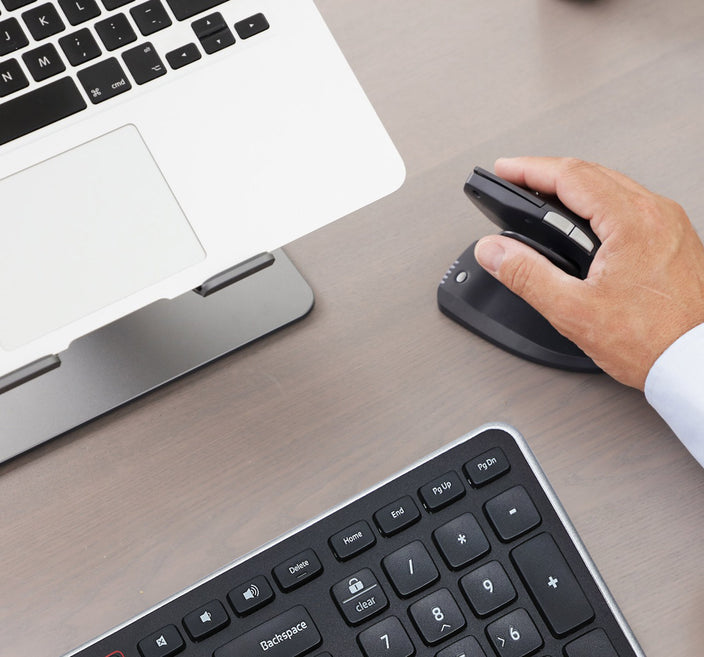Conditions do not have to get worse before they get better. Especially when it comes to pain during computer work. Good ergonomic habits can help.
The best approach to ergonomics is to put it on the agenda before problems start to occur. Proper working postures and equipment are not only important when lifting heavy objects - they are just as important when you have sedentary work.
Ergonomics may not be the flashiest topic on your company’s to-do list. 3-year plans, branding initiatives, digital transformation. Those topics tend to steal the show. However, ergonomics are just as crucial for the health of your business. Sometimes, it may even remind you of all the times your mom told you to sit properly, straighten your back, and run out and play instead of sitting at the computer - you just don't want your mother to be right.
But she was right. And for that - and a number of other reasons - you need to put ergonomics on the agenda in the office.
Read more: Prevent wrist pain during office work
Ergonomics in the office is a joint project
Ergonomics in the office must be a joint project for the entire workplace. Everyone should be a part of it, and no one should feel forced.
Therefore, you should talk to each other about ergonomics and the benefits you can reap, if you get it right.
The perception your colleagues have of ergonomics is - without a doubt - based on how they feel. There are those who never really experience pain no matter how they treat their body. There are those who already have discomfort. Lastly, there are all those in pain but who don't really notice it as it has become customary.
While it may seem like pain is an individual problem, it can quickly become a common problem. Poor ergonomics can result in higher sick leave, affecting colleagues as more tasks land at their desks.
Good ergonomics in the office is also good management
Of course, management must also be involved. If management are not the ones taking the initiative to improve the ergonomics in the office, then most likely they are not aware of what the gain of good ergonomics will be for the whole company.
Just as they probably also do not realise how many people are in pain due to office work.
Did you know:
Muscle pain is experienced by as many as 54% of office workers.
Source: SINTEF-report and Nordic survey with 4000 respondents.
A good place to start is to find out how big the problem is in your workplace. With your manager and work environment representative, you can have a workplace assessment or a well-being survey preparation map of the situation.
When you know how many have been affected now, you also know more about how best to intervene. Because good ergonomics are more than just the right office chair.
Break the bad habits
In addition to having the right physical environment to carry out office work, such as a chair, a table, a keyboard, a mouse and a screen, good habits must also be introduced in the workplace.
Too many people sit in front of the computer all day - and maybe even eat their lunch there. It does not provide the variety and movement that is important to stay fit and keep good health.
Together with management, you must find out how you can break the bad habits, so that you can move more during the day.
You might also like: Avoid injuries and save money: the effect of an ergonomically correct workstation
Maybe some meetings can be managed walking or standing (outside if the weather is good). Perhaps you can do joint stretching in the office. Perhaps you and your colleagues prefer to get up and walk around a bit when you talk on the phone - and therefore it could be an idea for the management to establish a "phone-meeting room", where you can go and talk, so you do not disturb your colleagues.
The little things you can do yourself to get good ergonomics in the office:
- Get away from the computer and talk to your colleagues instead of sending an email.
- Pick up your coffee yourself, or go with your colleague instead of them bringing it to you.
- Schedule your breaks, so you remember to keep them - and maybe agree to do it with your colleague.
- Always go to lunch and do not eat in front of the computer while you work.
- Talk openly with your colleagues if you have discomfort. It is not taboo to have pain in the neck or shoulders - and it should not be typical.




